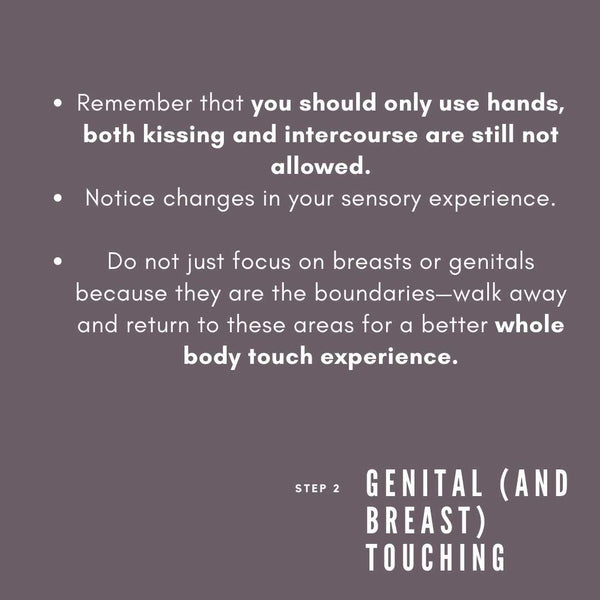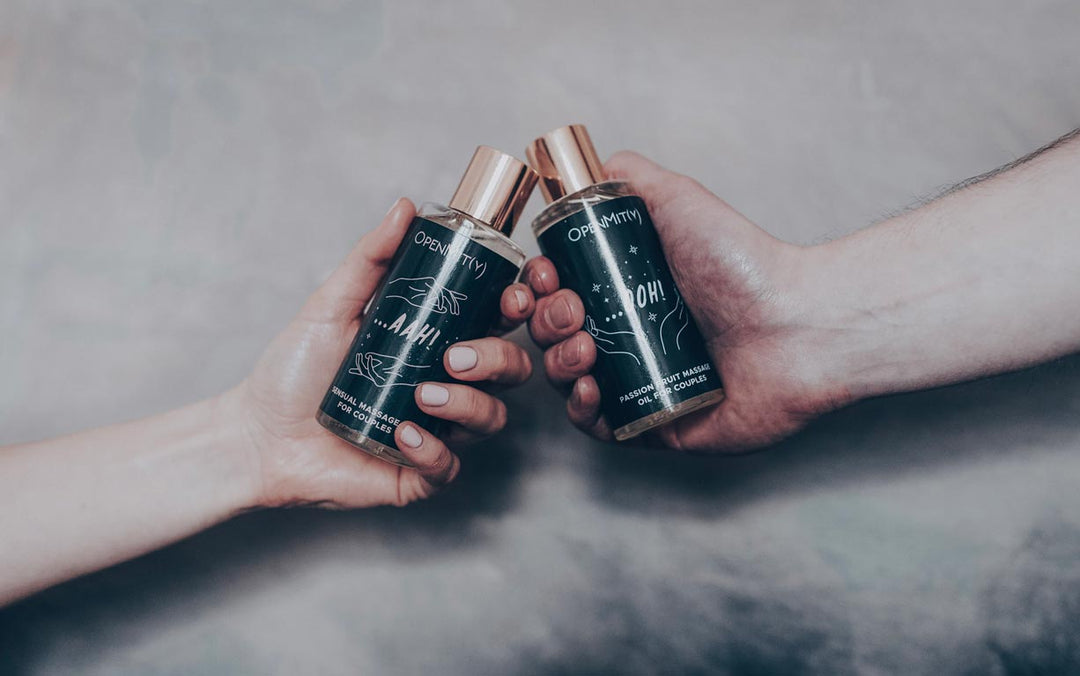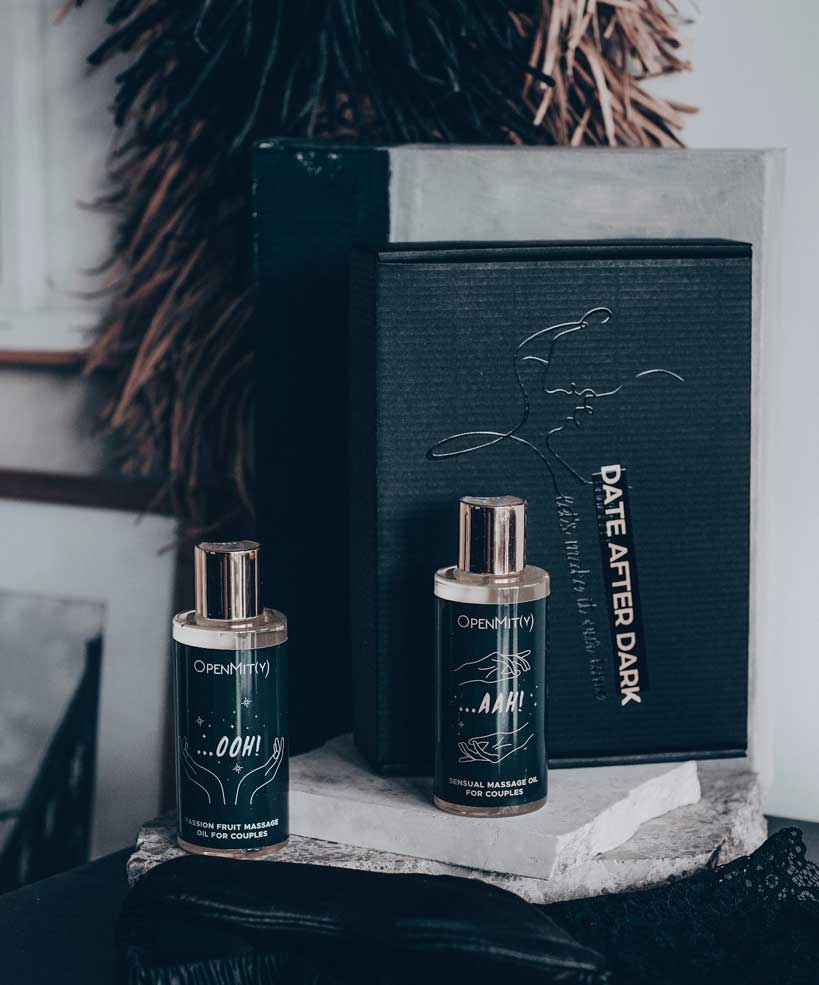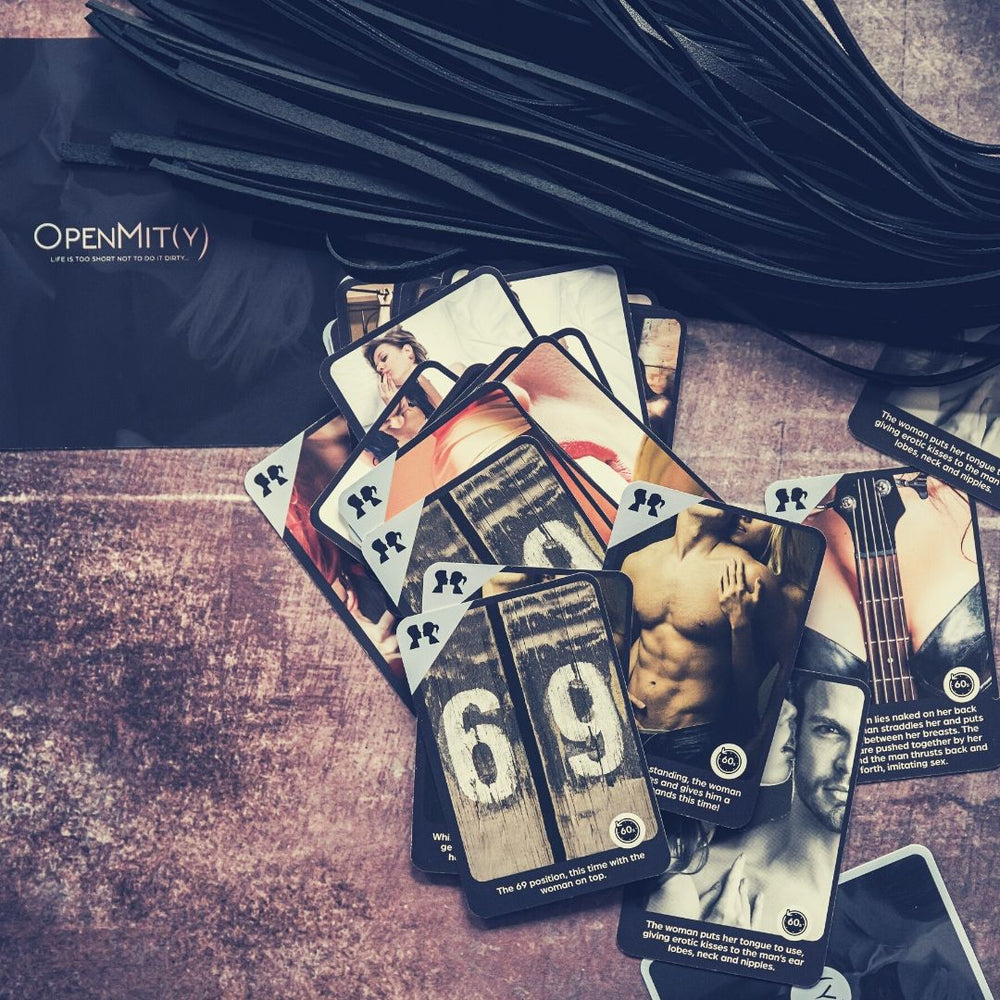Sensate Focus Exercises: A Step-by-Step Guide for Couples
Sensate focus is a technique often used in s*x therapy to refocus individuals from s*x-related anxieties and preconceptions about goal-oriented touch focused mainly on genitals and penetrative s*x to their own sensuality and awareness of touch (Avery-Clark et al., 2017).
We’ve created a sensate focus exercises step-by-step guide that can help you reduce your expectations of intimacy to experience intimacy satisfaction in its natural form!

A series of structured touching and exploration propositions allow you the opportunity to experience your and your partner's bodies in an exploratory, uncontested way without having to read each other's minds (Weiner and Avery-Clark, 2017).
Sensate focus exercises step-by-step guide for couples
Sensate focus for couples consists of a series of touching exercises that you and your partner do in sequence. One of the main goals of this exercise is for partners to let go of their expectations and evaluations of each other's touch, and focus instead on the sensory aspects of sensual touching such as temperature, texture, and pressure.
The idea behind sensory focus is that it allows couples to relax and become aware of the experience of sensual touch without being weighed down by preconceived ideas of what “should” happen. Sensation focus is also described as conscious touch or non-orgasmic/non-arousal-focused touch (SMSNA).
Although it may sound counterintuitive, couples practicing sensate focus do take advantage of the fact that the less s*xual responsiveness there is, the more probable it is to happen (Weiner and Avery-Clark, 2017).
Step 1: Non-genital Sensual Touching
Before you start, make sure that both you and your partner are clean and rested. Take your clothes off or wear very loose clothes, and determine:
- who will be the “toucher" and
- who will be the "recipient” first.

There should be no attempts to turn this experience into a s*xual encounter (Masters et al., 1994). This step should last for at least 15 minutes, with both partners agreeing to keep the interaction nons*xual.
Masters and Johnson advise:
- “...some prefer to start from one place on the body, such as the neck or feet, and work their way up or down.
- Others don't need a certain plan of action and simply explore different textures, temperatures, and contours of their partner's body without any prior idea of how they will proceed.
- The point for both partners is to focus only on feelings they are personally experiencing. It's not about trying to excite your partner or give them a massage”

Dr. Althof offers the following suggestion:
“...it may be necessary to have couples begin the exercises at a rudimentary level, such as holding hands in the dark, in bed, with both partners dressed in pajamas (Althof, 2000, p. 242, as cited in Weiner and Avery-Clark, 2015, p. 316).”
Step 2: Genital (and Breast) Touching
At this point, you can start touching breasts and genitals
- Remember that you should only use hands, both kissing and intercourse are still not allowed.
- Notice changes in your sensory experience.
- Do not just focus on breasts or genitals because they are the boundaries—walk away and return to these areas for a better whole body touch experience.

Although the "ban" on touching breasts and genitals is no longer in effect, touching should not change the nature of shared experience. It's not about trying to stimulate or move your partner, but it is about paying attention to how you feel when you’re exploring your partner's body as a sensitive and sensory experience (Masters et al., 1994).
Step 3: Adding Lotion/Lubricant
Adding lotion or oil to the skin will make it feel smoother and softer, which is simple tool to boost sensory awareness. We advise using a hypoallergenic, alcohol-free moisturizer; however, baby oil will suffice. Before applying oil or lotion, reheat the container in a basin of water.
Make sure you don't get any oil or lotion on your partner's skin. To warm it up, place it in the palm of your hand and rub it in.
- Some couples prefer to begin touching each other without lotion and then apply it halfway through for contrast.
- Others compare and contrast experiences by using it on one side but not the other
- while some use lotion from the start.

Whichever approach you choose, this exercise is always focused on sensations rather than goals such as massage or sexual encounter (Masters et al., 1994).
Check OpenMity massage oil set
Step 4: Mutual Sensual Touching
Now, it’s time to extend the scope of the touching experience by removing the artificiality of “your turn/my turn.” This step is designed to enrich the sensual touching experience by removing the artificiality of taking turns in couples' s*xual play (Masters et al., 1994). 
- Agree with your partner about whether you’d like to lie side-by-side, sit face-to-face, or any other mutually comfortable position that allows you to freely touch each other.
- During this exercise, touch yourselves at the same time, but for your own interest rather than attempting to excite each other.
- You should avoid breasts, chest, and genitals at first to allow yourselves to fully focus on sensations.
- Ultimately, you can touch these body parts as you would any other part of the body. Therefore, keep focusing on temperatures, pressure, and textures.

This step might not be easy as it appears, as sensory feelings are coming from two places simultaneously—from where you are touching and from where you are being touched. Now you are faced with intense and dynamic tension between competing demands for your time and attention.
- You can let your focus wander, as long as you’re focusing on both.
- If you notice that you’re focusing only on touching or receiving, switch your attention to the other sensation.
At this point in the sensate focus routine, you are learning to cycle between focusing on each source of stimulation until the two sensations naturally melt into a single, unified experience. This means that the intimacy with your partner enhances as you’re respecting both the space between you and the interaction that brings you together (Weiner and Avery-Clark, 2017).
Step 5: Sensual Intercourse
What’s happening in this step is that you are expanding accomplishments of concentrating awareness of physical sensations into sexual contact. Again, this contact is about discovering what feels interesting and pleasurable (Masters et al., 1994). This should feel like a different type of intercourse than what you’re used to.
- You can follow the previous steps starting from non-genital touching and being aware of what your fingertips are telling you to fall into a rhythm (Masters et al., 1994).
- Don't think or worry about becoming aroused as it's not the primary goal.
- You can gradually start including exploration of breasts and genitals, and you can show your partner what you like. However, make sure to avoid directing every move!
After both of you are comfortable, choose a position that allows intercourse, but don't rush in it.
- Use the same principles of sensate focus and continue touching each other while being aware of your genital areas touching.
- Whether you're the "toucher" or "recipient," feel free to keep exploring these sensations actively.
- If you both find sensual intercourse desirable, start only with slow partial penetration to feel the warmth and contact.

Take your time and hold still for a moment to feel subtle movements arising, and then slowly withdraw for 20 seconds before resuming intercourse. Then, you can be free to continue as you prefer, whether it is deeper or faster while keeping your focus on sensations.
Sensate Focus in Psychology
Sensate focus in psychology and s*x therapy is a diagnostic and therapeutic tool used to identify both psychological and relationship factors that contribute to:
- s*xual difficulties,
- teach new skills to overcome these problems,
- and promote meaningful sexual intimacy.
Sensate focus was central to Masters and Johnson's therapeutic work and continues to be used by sex therapists (Weiner and Avery-Clark, 2017).
Sensate focus techniques have successfully treated various psychological issues affecting sexual function such as erectile dysfunction, orgasm disorders, lack of arousal, vaginismus, and body image issues (Binik and Hall, 2014).
The good news is that you don’t necessarily need to have an issue or visit a sex therapist to be able to practice this technique. Try this simple guide of exercises at any time to spice things up with your partner, improve your sexual intimacy, and make sure that both of you have a meaningful and enjoyable experience beyond orgasm that allows such things to come naturally!
Recommended reading
Resources
Linschoten, M., Weiner, L., and Avery-Clark, C. (2016). “Sensate focus: a critical literature review.” Sexual and Relationship Therapy, 31(2), 230-247.
Masters, W.H., Johnson, E.W., and Koldony, R.C. (1994). Heterosexuality (1st ed.). Harper Collins.
SMSNA For Patients. https://www.smsna.org/patients/did-you-know/what-is-sensate-focus-and-how-does-it-work. March 2022.
Taylor, English. “Sensate Focus: A Tool For Modern Intimacy.” A Modern Fertility Blog. https://modernfertility.com/blog/sensate-focus/. July 26, 2018. March 2022.
Weiner, L. and Avery-Clark, C. (2017). Sensate Focus in Sex Therapy: The Illustrated Manual (1st ed.). Routledge.
Weiner, L., and Avery-Clark, C. (2014). “Sensate Focus: clarifying the Master’s and Johnson’s model.” Sexual and Relationship Therapy, 29(3), 307-319.
Wiederman, M. W. (2001). “‘Don’t Look Now’: The Role of Self-Focus in Sexual Dysfunction.” The Family Journal, 9(2), 210–214.
https://www.blueheart.io/sensate-focus#Sensate-Focus-exercises-for-individuals
https://www.choosingtherapy.com/sex-therapy-sensate-focus/
https://www.verywellmind.com/sex-therapy-with-sensate-focus-4145783
https://www.smsna.org/patients/did-you-know/what-is-sensate-focus-and-how-does-it-work
Best selling games
View allFOR LOVING COUPLES
To keep the passion alive
For Loving couples who want to learn and grow together while keeping their passion alive! We want every couples’ bonds to become stronger.























